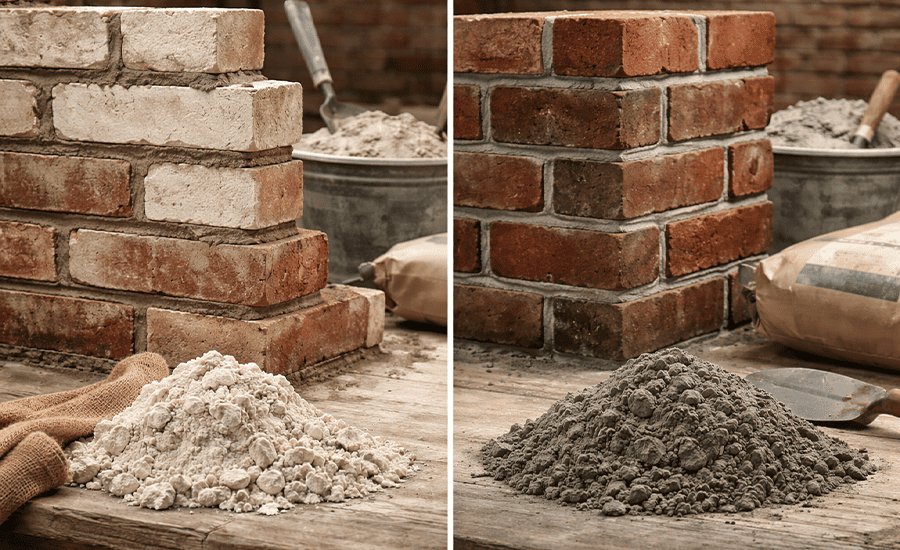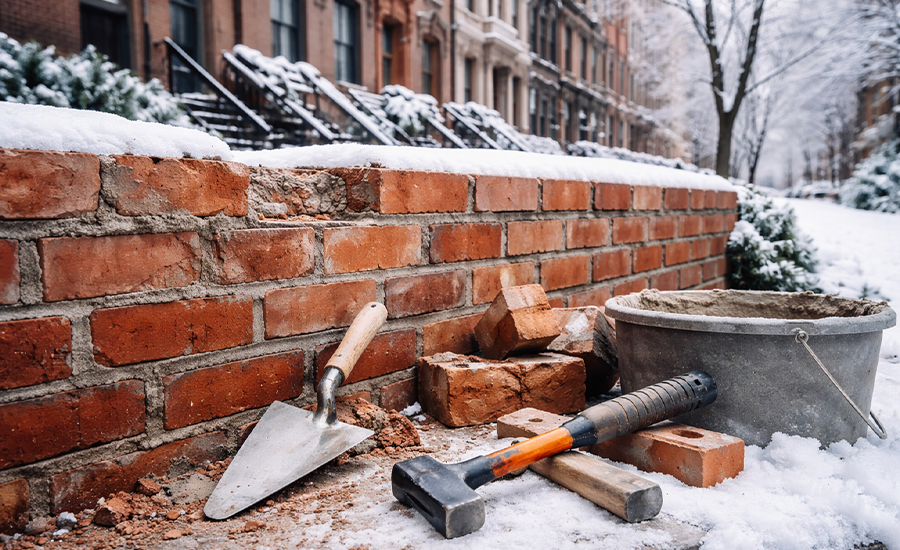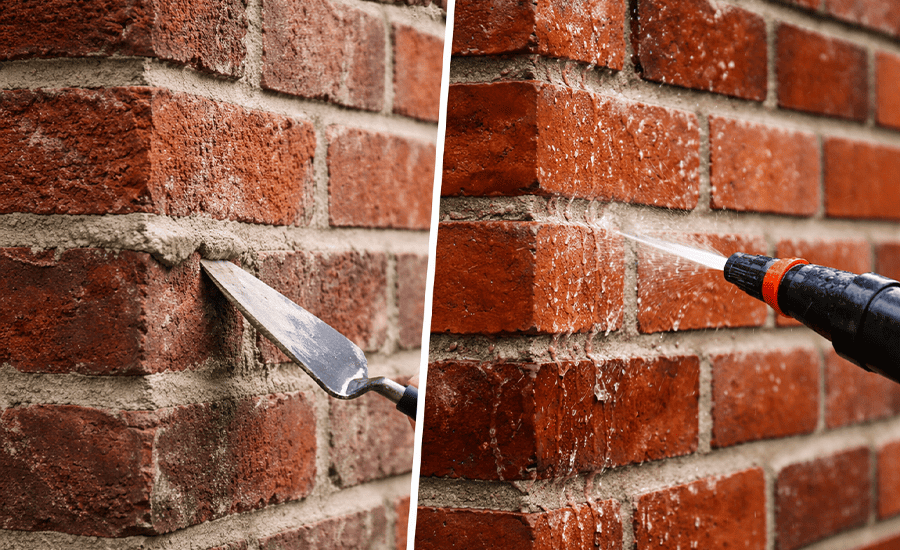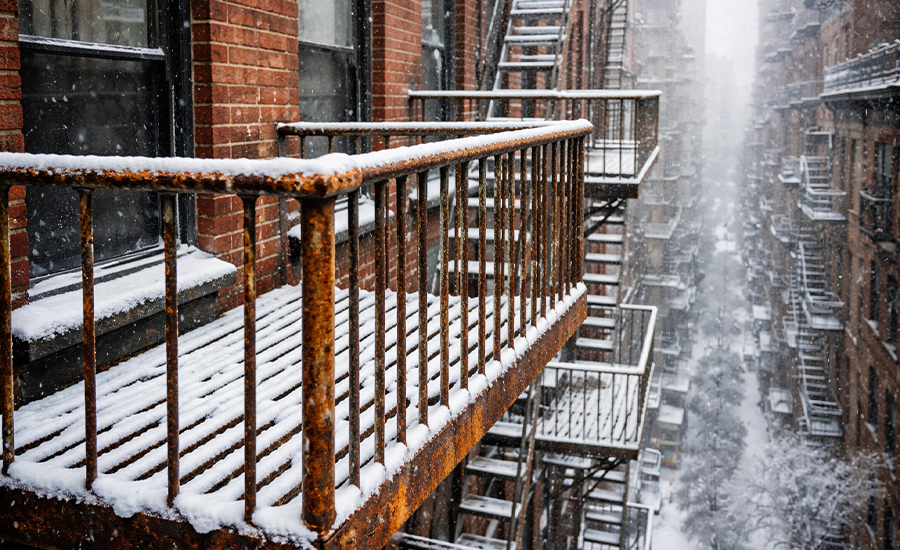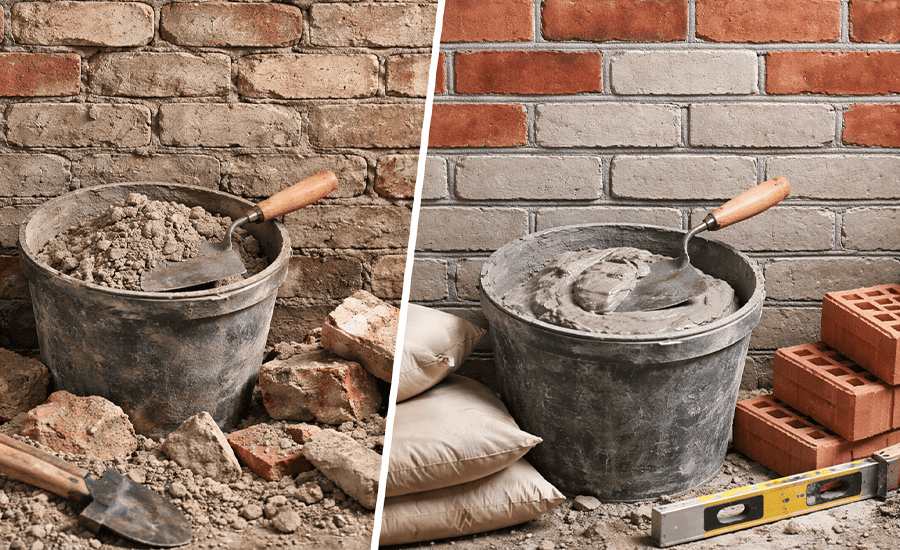As the fire escapes are known to be the safest pathways to use in the time of emergency, they also demand proper maintenance and cleaning. NYC faces the most severe winters, and it can be alarming because the snow starts accumulating on the fire escapes, which leads to corrosion and a sagging framework. Not only does the trapped moisture cause rusting, but also the snow and ice obstruct the egress routes and make them slippery. But most of the time, homeowners neglect the safety and maintenance of fire escape, which results in heavy repair costs. Due to temperature fluctuations, the metal framework faces expansion and contraction, which loosens the welds and joints. Whether you’re a landlord, property manager, or resident, understanding the right ways to maintain your fire escape in NYC winters isn’t just a matter of safety; it’s a legal requirement. So make sure to look after the NYC safety standards and keep your fire escape up to code.
In this blog, we’ll explore the ideal and suitable ways to ensure your fire escape remains functional, compliant, and ready for emergencies all season long, especially in winter.
Why Your Fire Escapes Need Extra Care During Winter?
The fluctuating and bipolar winter conditions in NYC can be highly challenging and accelerate the rust and corrosion easily, as it is made from wrought iron and steel. When snow, ice, or salt comes into contact with the metal structure, it wears down the framework really fast. If we fail to address these issues on time, it can put your fire escape under law violations. Let’s have a look at how these winter stressors damage your fire escape.
| Winter Stressors | Structural Vulnerabilities |
|---|---|
| Snow deposition | Excess snow buildup puts pressure on the joints & bends the fire escape over time. |
| Frost development | Risk of slips & falls during emergencies. |
| Ice melt products | Make sure to properly wash, as the unremoved residue can freeze quickly in cold conditions. |
| Thermal stress cycle | Expansion & contraction result in joint widening & metal fatigue. |
Understanding NYC Fire Escape Safety Requirements
NYC local officials demand that homeowners keep their fire escape safe, functional, 24/7 accessible, and structurally strengthened to comply with NYC safety codes and regulations. Let’s have a look at the safety guidelines to follow:
- Periodic safety check: Make sure to get your fire escape inspected every 5 years by local law 11 and FDNY officials.
- Upkeep accountability: Keep an eye on the functionality of your fire escape. Make sure the emergency egress is unobstructed and clear all year round.
- Obstruction-free Pathways: Remove the snow, ice, hardware, leaves, or any debris that is blocking the route to the fire escapes.
- Maintenance Report: If you find corrosion, broken steps, or structural damage during inspection, you should instantly hire a qualified contractor for repairs.
If your property includes a rooftop system, you might also like to read how do rooftop fire escapes work? for insights into maintenance and compliance.
How To Keep Your Fire Escape Safe This Winter?
Follow the steps below to keep your fire escape compliant and safe:
Plan for a Winter-Readiness Inspection
Before the first snowfall, hire a licensed fire escape inspector to evaluate the structure’s stability. They’ll check for:
- Loose bolts, nuts, or welds.
- Rust or flaking paint.
- Sagging or bent sections.
- Secure anchor points and railings.
Eliminate Frozen Build-up Quickly
Allowing snow to pile up adds unnecessary weight and makes the surface slippery. To safely remove snow:
- Use plastic shovels or soft-bristled brooms instead of metal tools that may scratch protective coatings.
- Avoid rock salt; it speeds up metal corrosion. Instead, use environmentally safe, non-corrosive deicers like calcium magnesium acetate.
- After clearing, wipe off residual moisture to prevent refreezing.
Add a Weather-Resistant Finish
- Before winter arrives, repaint or coat your fire escape with weather-resistant, anti-rust paint.
- This adds a protective barrier against moisture and salt exposure.
- Tip: Use a primer + oil-based paint combination for maximum durability.
Keep Metal Joints Properly Oiled
Hinges, ladders, and release mechanisms can freeze or stiffen in low temperatures. Apply weather-grade lubricants to keep them moving smoothly even in freezing conditions.
Keep All Escape Paths Open
- Never use the fire escape as extra storage space, especially during winter.
- Boxes, plants, and furniture can block escape routes or make snow removal harder.
- Ensure that windows or doors leading to the fire escape can open fully without obstruction.
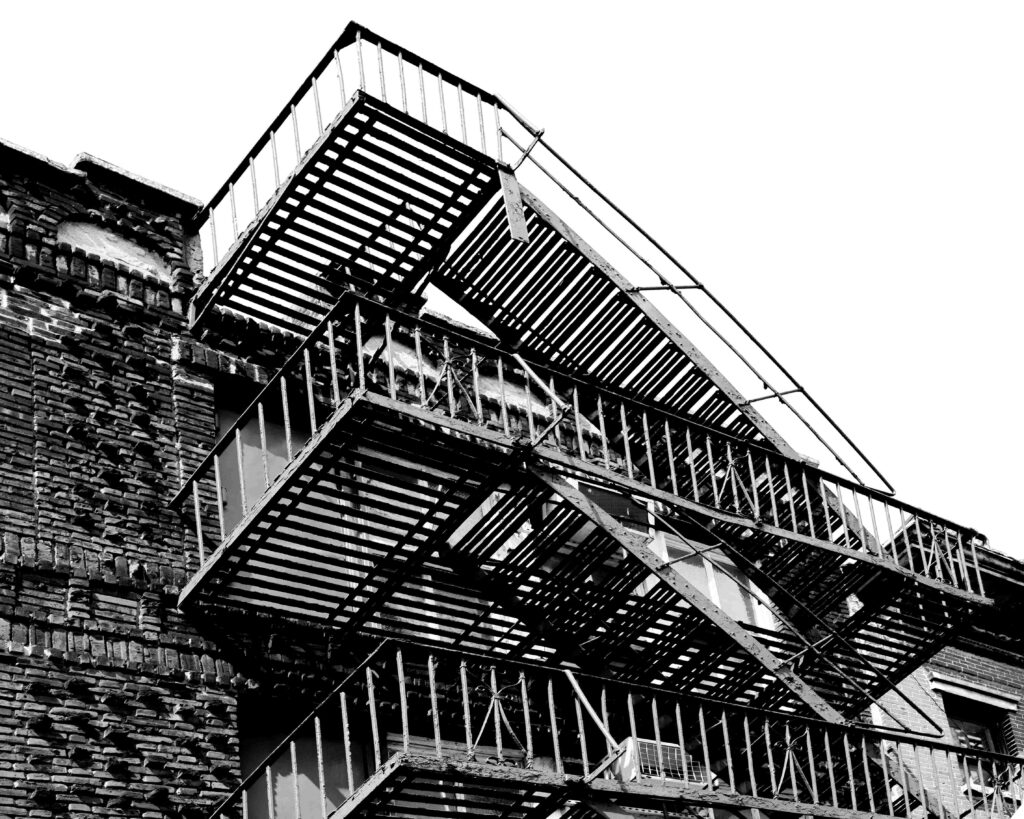
The Importance of Hiring Experts For Fire Escape Repairs
Make sure to hire a professional fire escape contractor for repairs, restoration, and maintenance of your fire escape, as they adhere to NYC local codes and safety regulations:
- Regulatory Compliance: Hiring certified contractors ensures adherence to NYC Building Department regulations and safety guidelines.
- Appropriate Tool Handling: Professionals have deep knowledge about tools and materials, ensuring they handle them safely.
- Structural Stabilization: Experts can detect the root cause of the damage early.
- Maintenance Records: They’ll provide you with the detailed compliance reports and work on the permits.
Old metal structures can be restored to modern standards. Learn how in our article can you replace an old fire escape with a modern design?.
Fire Escape Emergency Response Guidelines
Following these emergency guidelines is essential for safe evacuation, as winter poses significant risks to your metal framework:
- Always use a de-icing solution to remove the ice from the fire escape.
- Always use non-slip to avoid accidents on slushy surfaces.
- Make all the lightning and emergency tools ready.
- If your fire escape is unsafe and corroded, don’t use it. Make Sure to call FDNY officials immediately.
Final Thoughts
In conclusion, maintaining your fire escapes up to the code and NYC safety standards is essential to prevent damage and winter hazards. Winter comes with low tolerance that can cause harm to your safety exits, making them slippery and corrosive. Conduct inspections frequently, eliminate the obstructing elements while applying protective, resilient, and anti-slip texture coatings for safe and sturdy emergency exits.
Sardar Restoration Corp proudly serves every corner of NYC, including the Bronx, Manhattan, Brooklyn, Westchester, and Queens. Our services are designed to meet your specific needs, providing top-quality solutions wherever you are. Check our service areas to see how we can assist you in your location.
Contact us today at (+1) 917-355-8556 or sardarrestoration@gmail.com, or visit us at 2770 Fish Ave, Bronx, NY 10469, United States.
FAQs
Do you provide fire escape inspections during winter?
Yes! Sardar Restoration Corp. provides fire escape inspection all year, including winter. We make sure all the access points are rust-free and functional, guaranteeing it lies under code compliance.
Do you handle emergency repairs during cold weather?
Yes! Sardar Restoration Corp. handles all the emergency repairs 24/7, especially during winter. We offer both repairs and full replacements, such as fixing rusted bolts, broken steps, or jammed ladders while maintaining them according to NYC Safety standards.
Can you repaint or rust-proof fire escapes in winter?
Yes! Sardar Restoration Corp. offers repainting services on fire escapes in winter using high-quality paints and sealants, preventing corrosion during the cold and damp months.
What causes fire escape corrosion in NYC winters?
The constant exposure to snow, salt, and freezing rain accelerates metal rusting. Moisture trapped in joints and unsealed paint cracks worsens corrosion if not properly maintained.
How can I prepare my fire escape before the first snowfall?
Schedule a full inspection, apply anti-rust paint, lubricate moving parts, and clear debris before temperatures drop. These steps help prevent structural damage and ensure safety compliance.
How often should I inspect my fire escape in winter?
Our fire escape contractor in Brooklyn suggests you conduct inspections after every significant snowfall or freezing rain, but mainly once a year, to prevent costly damage later.



